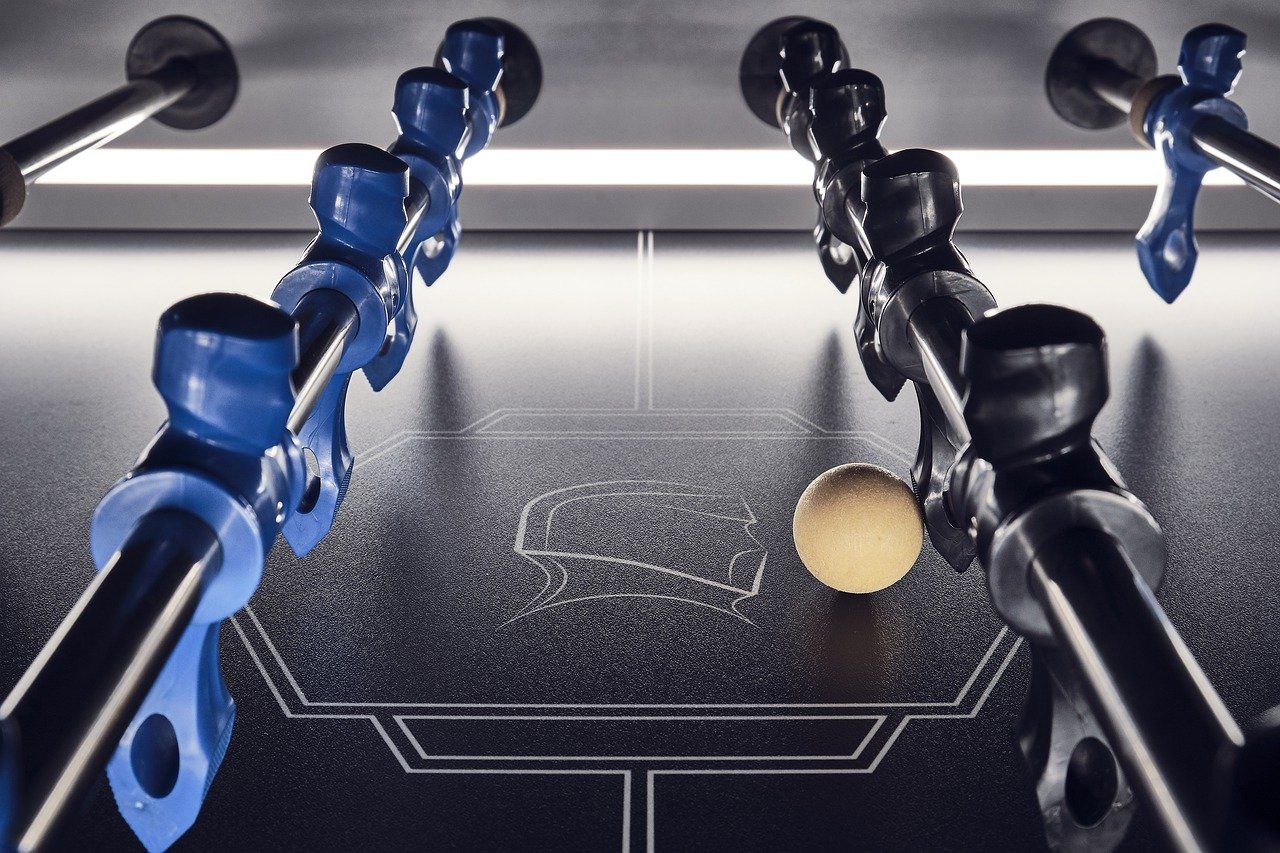The differentiation strategy can sound complicated. In practice, it is simpler than you might think. As long as the company takes the time to research and understand not only its competitors, but its own separate brand as well. Then, in no time, it should be on the way to differentiation.
- What is the differentiation strategy?
- Differentiation strategy - where to start?
- Advantages of effective differentiation
- Differentiation strategy - examples
- Why is it worth implementing a differentiation strategy?
- Main areas of differentiation strategy
- How to implement differentiation effectively?
- Benefits of differentiation
Differentiation strategy is one element of creating a successful brand. Once a company has established how it positions its brand, it can begin to refine its differentiation strategy. In other words, it needs to know beforehand where it positions itself in the market and what makes it unique. Then comes the time to show the world how it is different from its competitors and for what specific reasons.
What is the differentiation strategy?
A simple answer to the question of what it actually is differentiation strategy would be this: a brand's differentiation reflects what sets it apart from similar competitors in the market. When developing a positioning strategy, the brand gets to know other companies in its sector offering similar solutions and products. It may find that potential customers have plenty to choose from. So how do you convince them to choose one brand over another? The only way is to reassure them that there is something 'different' about it. Something that a particular target group finds it more attractive. Something that will appeal to your audience and their wallets.
Unfortunately, just staying away from blue in your logo, when used by every other company in the industry, is not the end of your branding strategy. The differentiation strategy is something more complex. The company needs to make sure that everything it represents has value for customers. Starting with the function of the product, through employer branding, customer experience and the visual effects used in branding.
How to stand out in a competitive market?
Check what we recommend for your company.
Strategy differentiation - where to start?
Differentiation strategy you can start by comprehensively researching your company and the elements of your brand that are different from what your competitors offer. It is usually a good idea to start by creating a list of different differentiating elements and then testing each one to see if it is actually a good differentiator. An effective differentiation strategy requires answering three key questions.
1. Is what the company communicates authentic?
1. Is what the company communicates authentic?
The distinguishing feature of a brand is what defines the company. It's an element that highlights something important - from the way you do business to the types of products you manufacture. It is so characteristic of a given company that no other company will be able to copy it. It is not worth inventing a distinguishing feature if one does not actually exist. Today's customers are smarter than you think. They can easily see through exaggerated claims. Thus, the differentiation strategy should be based on a discriminant that the company will be able to prove every day.
2. Does what distinguishes the company matter?
Finding a few differences between your business and competitors can be quite easy. However, this does not mean that all of these differences are valuable. If the way a company distinguishes itself from other brands doesn't matter to its audience, it doesn't really add anything. It will not increase the business opportunity. The differentiation strategy requires reflection. When choosing brand differentiation strategies, a company needs to know exactly what it wants its customers to associate with it.

3. Is it feasible?
If a company is going to prove to its customers that what it says about its brand is true, it needs to make sure that it has chosen a differentiator that will work. Corporate identity is easy - a logo, brand name, etc. stand out. This is something that the company's customers can see every day. On the other hand, just telling people that the products offered by the company are better than other options on the market is much more difficult to prove.
Advantages of effective differentiation
Differentiation strategy has several key advantages that can help create a unique niche in the industry. One of these is less price competition. A differentiation strategy allows a company to compete in the market with something other than lower prices. For example, a cosmetics company can differentiate its products by improving their performance or by using natural ingredients alone. Although its competitors sell their cosmetics more cheaply, they cannot provide consumers with the same quality formulations and ingredients.
Differentiation strategy is based on the uniqueness of the product, on its exceptional features. If you're wondering what makes your products stand out, create a list of features that your products have that your competitors lack. Some of these really do make your product unique. Now you need to communicate this to consumers - through effective marketing and advertising. Involve online marketingand if you operate in the business to business sector - also b2b marketing.
The differentiation strategy is also higher profits. When products are diversified and transformed into higher quality products, the effect can be one - higher profit margins. Customers who are not price sensitive expect premium products. So if your target market is willing to pay a higher price for the highest quality or better value, your business can generate more revenue with less sales. Following this line of reasoning, if a company maintains the perceived quality of its products, it can create brand loyal customers.

This is another benefit provided by the differentiation strategy. Another is to make customers believe that there is no other product on the market that meets their needs and expectations equally well. What's more - a company can gain an advantage in the market even when similar products are available. How is this possible? Because customers will not want to replace its product with another. A brand differentiation strategy is all about how it presents itself to the surrounding world. Let's analyse this with examples.
Differentiation strategy - examples
A brand that knows well what it should look like differentiation strategy is Lush. Although Lush Cosmetics has not yet entered Poland, offering natural, handmade cosmetics, it has won the hearts of many women around the world. The brand positions itself as a unique solution for health and beauty. In doing so, it is unlike any other brand of its kind on the market and reaches out to its customers with a warm, friendly vernacular identity that is evident in everything from its packaging to its message.
Perhaps the most fundamental differentiator of the Lush brand is its commitment to fair trade policies and the purity of its handmade solutions. This is a company that demonstrates the value of social and corporate responsibility in everything it does. At the same time, its brand is straightforward and authentic. What it is about differentiation strategy Lush? The company differentiates its brand by using a name that evokes ideas of nature and luxury. It understands its customers - women and men who are fed up with standard cosmetics.
Lush does not sell products. Instead, it sells a point of view on defining beauty, seeking a focus on natural ingredients, unique solutions and sustainable ways of doing business. The brand also offers a one-of-a-kind retail experience. When customers walk into their stationary shop, they can expect professional advice and even sample the product before they buy. To me as a consumer, this differentiation strategy definitely appeals.
One of the easiest ways to make your business stand out from the crowd is to use the right techniques branding. A brand is associations, connotations or ideas related to a company, product or service. Some of these associations can be actively promoted by marketing solutions and the definition of your own corporate identity. On the other hand, part of the brand identity is impossible to control because it is influenced by customer experiences and opinions.
One example of a widely recognized brand is Coca-Cola. Her differentiation strategy is a masterpiece. Note that it is distinguished not only by the name or the product, but also by the choice of colors, the curvature of the bottles and glasses, the way it is sold, and even the history of the brand. Its marketing scheme is perceived by masses of customers as original and unique. We associate all dark, carbonated drinks other than Coca-Cola with a copy of an authentic brand. Thanks to careful branding, Coca-Cola has become a company worth approximately $ 84 billion in 2020.

Why is it worth implementing a differentiation strategy?
Having a brand differentiation strategy has probably never been more important than it is today. Online business has made most industries that also operate on the Internet (basically all industries!) Incredibly competitive.
Every Michał, Sandra or Jacek can create a cheap website with a free logo and write something about "being unique" on it. Therefore, it is not enough. Today's demanding consumers will not buy it - literally and figuratively. When we search for a service or product online, we expect it to be rated highly in Google. When we enter the site, we expect it to be user-friendly and full of beautiful and relevant images that appeal to us as customers. We want there to be some very special selling point that goes beyond the written promise. We want the brand to appeal to us and stand out from the competition we looked at 30 seconds ago. How can this be achieved? Only by creating a strong brand differentiation strategy can a company successfully differentiate itself from potential competitors.
Main areas of differentiation strategy
Developing differentiation strategyIt is worth focusing on the key areas that have the greatest impact on how customers perceive the brand. The first of these is the product, where quality craftsmanship, innovative features or unique design can give an offer a unique character. Another area differentiation is customer service - personalisation of contact, quick responses to needs and professional advice are now becoming the foundation of long-term relationships. It is also important to bear in mind distribution, whose flexibility and convenience can determine the purchasing decision. Differentiation is, above all, the ability to build value where the competition has not yet reached. A brand that is able to engage emotionally and convince people of its mission achieves an edge that is difficult to fake.
How to implement differentiation effectively?
In order to implement differentiation was effective, it is necessary to start with a thorough analysis of the needs of the target group. Only by understanding what is most important to customers can unique solutions be designed. The next step is to monitor the activities of the competition - not to copy them, but to find market niches to exploit. What is the differentiation strategy? It is a process of building advantage through real value, not an empty marketing slogan. Use differentiation in practice also requires consistency - every element of the brand's communication, from the logo to complaints handling, must reinforce the same message. It is also worth implementing a system for measuring effectiveness - data on customer engagement and sales levels will show whether the differentiation strategy produces the expected results.
Benefits of differentiation
Well planned differentiation brings companies a number of tangible benefits that translate into sustainable competitive advantage. First and foremost, it makes it possible to build loyalty among customers, who are more likely to return to brands that offer something more than the standard. Another advantage is the ability to charge higher prices without losing demand - as differentiation implies value that customers are willing to pay for. In addition, a differentiating brand gains a stronger position in the market and becomes less vulnerable to competitors. Differentiation strategy also results in a clear increase in recognition and a positive corporate image.

